- BitBiased – Daily AI Newsletter | bitbiased.ai
- Posts
- OpenAI's ChatGPT Agent Marks a Turning Point in Hands-On AI
OpenAI's ChatGPT Agent Marks a Turning Point in Hands-On AI
A Multi-Agent AI System Targeting Human-Level Intelligence
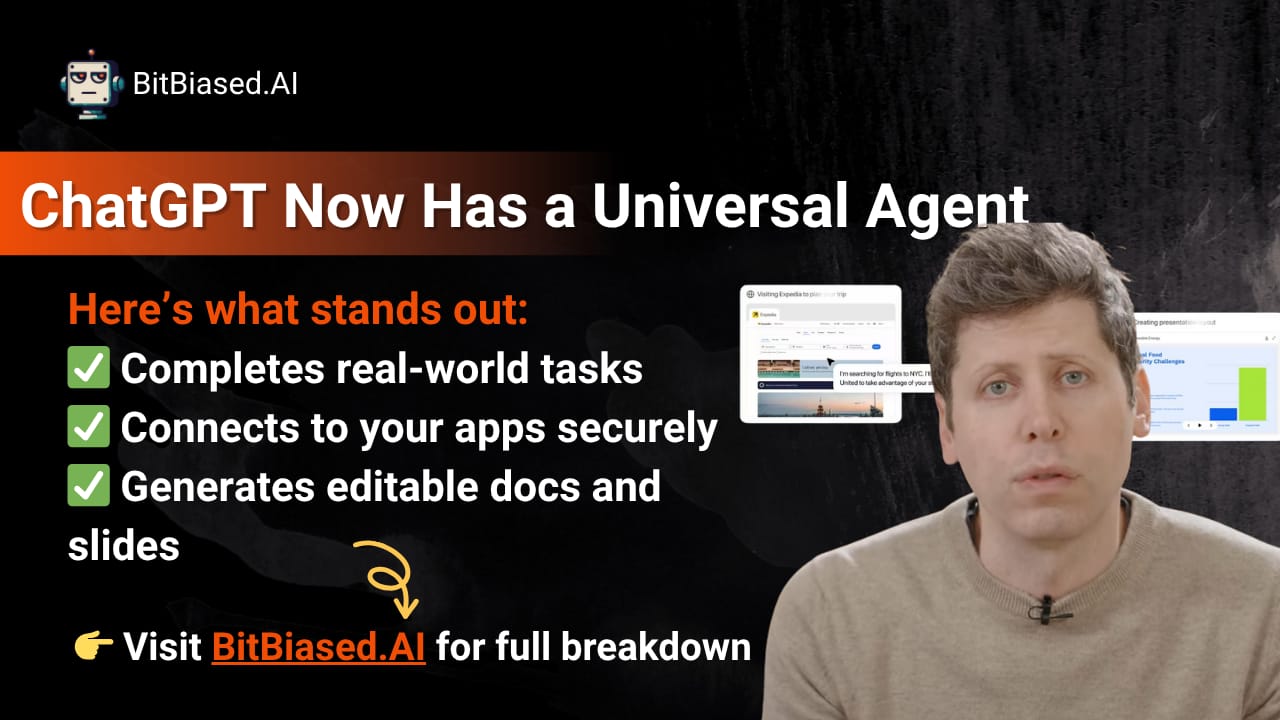
In a move poised to reshape how consumers and enterprises interact with artificial intelligence, OpenAI has launched "ChatGPT Agent," a powerful new capability that allows its popular AI model to carry out complex tasks, not just answer questions. The feature, introduced on July 17, 2025, integrates autonomous decision-making, app integration, and task execution under one unified system, transforming ChatGPT into a full-fledged digital assistant.
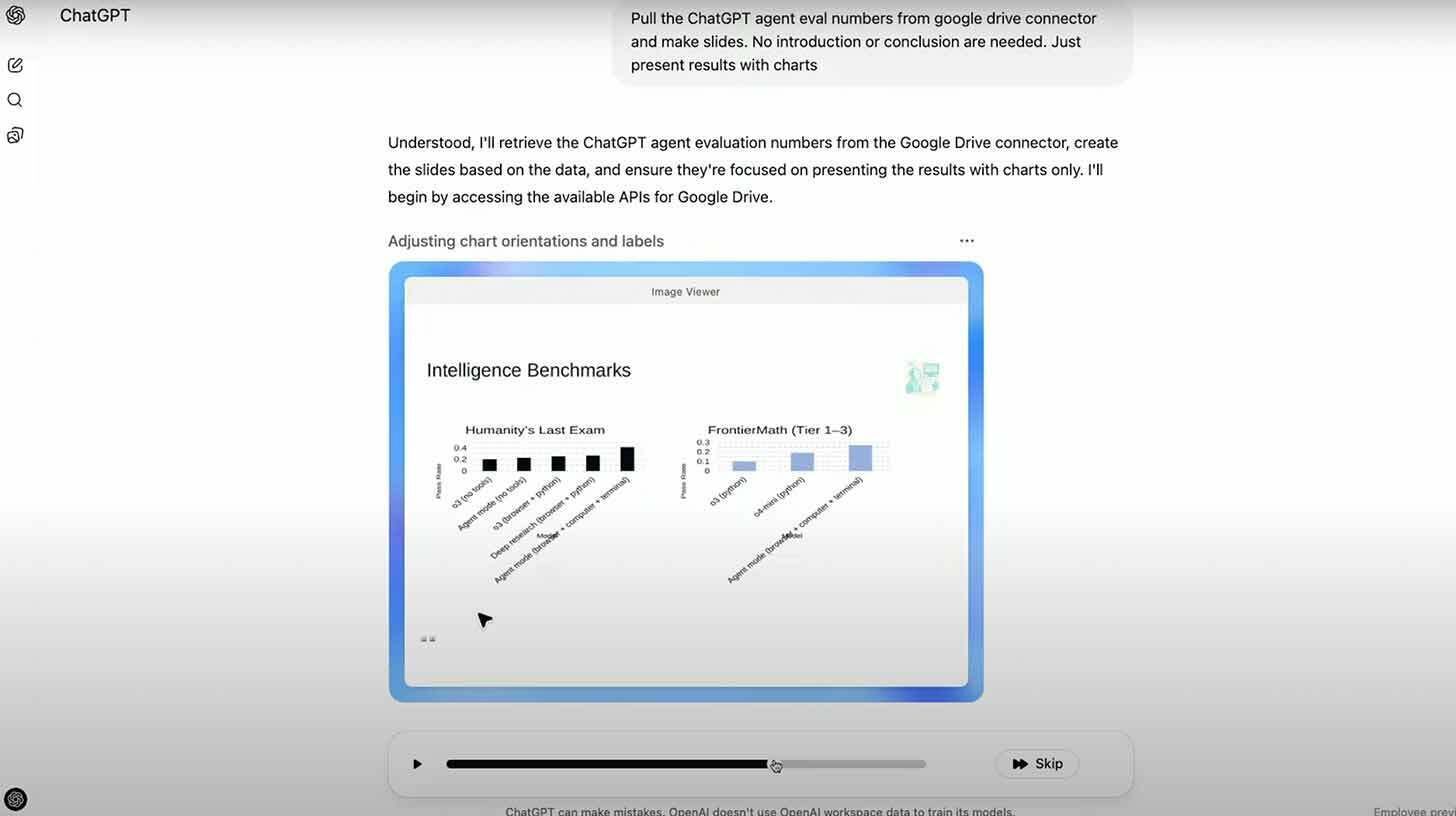
A Glimpse at the Future of Assistant AI
Until now, ChatGPT was primarily known for generating text, answering questions, and assisting with programming or creative work. With the agent update, it can now complete multi-step tasks end-to-end. Need to plan a trip, analyze financial data, or order groceries for dinner? The new agent can do it all.
OpenAI describes the system as one that "thinks and acts" using a virtual machine within ChatGPT. The agent can navigate websites, write and execute code, access documents from connected services, and manipulate files. It's a shift from conversational AI to operational AI, a system designed to carry out real-world goals rather than simulate human dialogue.
The implications are significant. It could redefine workflows, both personal and professional, and reshape expectations of what AI can do on behalf of its users.
How It Works: The Unified Agentic Toolset
At the heart of ChatGPT Agent is its unified toolset, which includes:
A GUI browser that can scroll, click, and interact with sites visually
A text-based browser optimized for data extraction and summarization
A secure terminal that can run scripts and process information
API-level integration with popular platforms like Gmail, Google Drive, GitHub, and others
The agent determines which tools to use depending on the task. For example, when asked to compare competitors, it might use the text browser to skim web content, the GUI browser to log into dashboards, and the terminal to generate reports or graphs.
This modularity allows the agent to perform surprisingly elaborate workflows while maintaining full context. According to OpenAI, the system builds on earlier tools like Operator (web browsing) and Deep Research, consolidating them into a single experience within ChatGPT.
Connecting to the Apps You Use Every Day
A key feature is the ability to connect ChatGPT to external services via "ChatGPT Connectors."
Once authenticated, the agent can read emails, access calendar events, browse files, and summarize data across multiple platforms. OpenAI emphasizes that read-only access is the default. Users are prompted to log in manually through a secure "takeover" process if the agent needs to take action like sending an email or booking a meeting.
This access opens the door for a range of high-utility workflows: "Check my inbox for invoices and summarize them," or "Draft a meeting recap using the notes in my Google Docs."
While connectors unlock efficiency, they also raise new privacy concerns. OpenAI says no passwords are stored, and users can revoke access or wipe browsing history with a click. Sensitive actions require explicit permission.
Generating Real-World Output, Not Just Answers
Another standout capability is the generation of real, editable files,a dramatic evolution from ChatGPT's traditional text responses. The agent can generate Excel spreadsheets from scratch, create PowerPoint slide decks using online or uploaded data, and export polished documents for download and further editing. These outputs can be opened in standard office software for further refinement.
In internal demos, the system was tasked with analyzing three major competitors and outputting a formatted slide deck. The result: structured SWOT analyses and summary slides that could be used in a business meeting with minimal tweaks.
According to OpenAI, this functionality is still in beta. Output layouts and design fidelity are being improved based on user feedback. But even now, it represents a leap forward in AI-generated deliverables.
Autonomous Task Planning and Scheduling
Beyond single tasks, ChatGPT Agent can break down complex goals into subtasks and execute them in sequence. This capability enables it to plan events or projects from scratch, automate recurring reports or alerts, and carry out long-running research processes without constant oversight.
Users can also schedule tasks to recur. Want a Monday-morning market roundup or a weekly to-do list based on your calendar?ChatGPT Agent can run these tasks automatically and alert you when they're ready.
This turns ChatGPT from a reactive assistant into a proactive one,not only answering when called but acting in the background on behalf of the user.
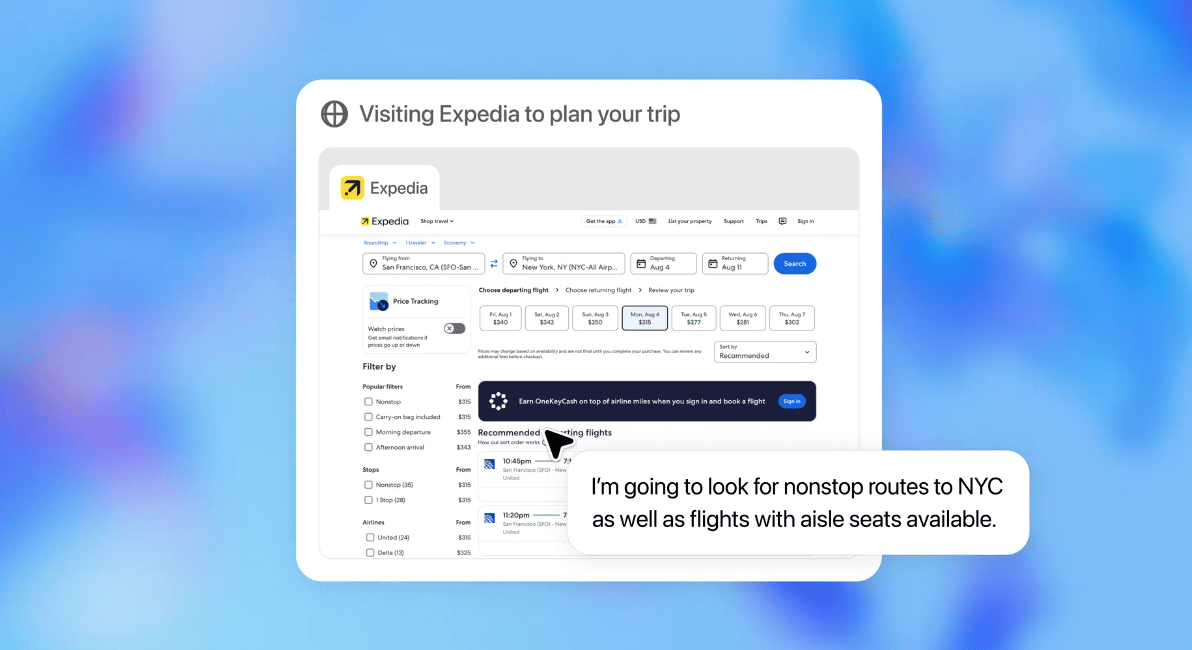
Transparency and Control in Web Interactions
Transparency is a critical feature of ChatGPT Agent. As it navigates the web, the system displays each action in real-time: every click, search query, and page load is narrated on screen.
If a user sees something they want to change, they can pause the agent, redirect it, or offer additional input. This human-in-the-loop model allows the system to remain under control without stalling automation.
Importantly, the agent pauses before irreversible actions,such as making a purchase or submitting a form. A special "Watch Mode" also forces human supervision during sensitive flows like online banking, which are mostly blocked anyway for safety reasons.
Safety and Privacy: Designed with Limits
Given its increased autonomy, the agent introduces new security challenges. OpenAI says it has taken a "defense-in-depth" approach to safety. The agent operates in a sandboxed virtual machine, with access to sensitive tools restricted and supervised. It actively filters for prompt injection attacks, and it never stores passwords,access tokens are temporary by design.
Users can delete browsing data, revoke app access, or reset the agent's context at any time. Tasks that involve financial transactions or confidential platforms are either off-limits or require explicit, real-time approval.
OpenAI describes the feature as high-capability but early-stage. CEO Sam Altman warned users not to rely on it yet for critical or highly sensitive tasks. "It represents a new level of capability," he said, "but it still needs oversight."
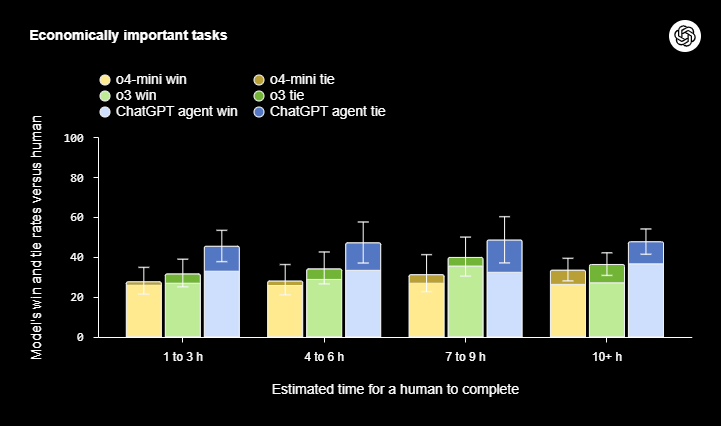
Who Gets It and How to Use It
At launch, the feature is available to subscribers of ChatGPT's Pro, Plus, and Team plans. Pro users get 400 monthly agent actions, while Plus and Team subscribers start with 40, with options to purchase more.
To use the agent:
Enable "Agent Mode" in the ChatGPT interface
Describe your task in natural language
Watch as the system narrates its process and prompts for input when needed
Review the generated output or schedule recurring tasks
Setup for app connectors is done through account settings, where users can link services and manage access permissions.
Enterprise and education access is expected later this quarter. Free users do not currently have access.
Early Reactions: Impressed, Cautious, Curious
Initial reactions from journalists and early testers have been largely positive,if cautious.
TechCrunch called it OpenAI's "boldest move yet" toward building a true digital assistant. The Verge highlighted its ability to tackle consumer and business workflows alike. A WIRED staffer described it as "easier than doing it myself" after using it to order a dozen cupcakes.
But others noted the time costs: some workflows took 15 to 30 minutes to complete. Social media is already filled with anecdotes: some impressive, others humorous. One user shared a screenshot of the agent accidentally booking a reservation at the wrong restaurant before being corrected.
The consensus? The potential is real, but so is the need for vigilance.
Bigger Picture: AI That Acts, Not Just Responds
ChatGPT Agent represents a milestone in AI evolution. For years, the focus has been on generation,text, images, code. This feature moves into orchestration: letting AI act on your behalf across systems, data sources, and web interfaces.
Experts say this marks the beginning of agentic AI: systems that pursue user goals across applications with minimal supervision.
If successful, it could change everything from how consumers shop to how enterprises manage internal workflows. And it raises urgent new questions about safety, privacy, and what it means to "delegate" responsibility to a machine.
Still, in the eyes of many, OpenAI has planted a flag in the future. WIRED journalist Reece Rogers, who tested the feature by ordering cupcakes, summed it up: "That one took almost an hour,but it was easier than me doing it myself, because I didn’t want to."
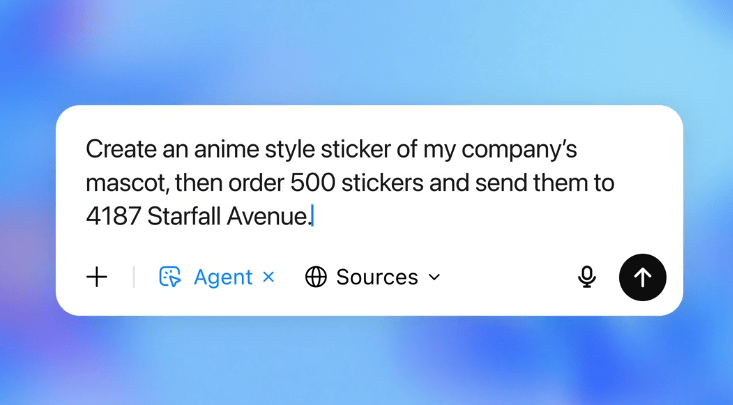
Stay tuned for more developments in AI and emerging tech. If you found this article useful, consider subscribing to BitBiased.ai for in-depth analysis and expert coverage.